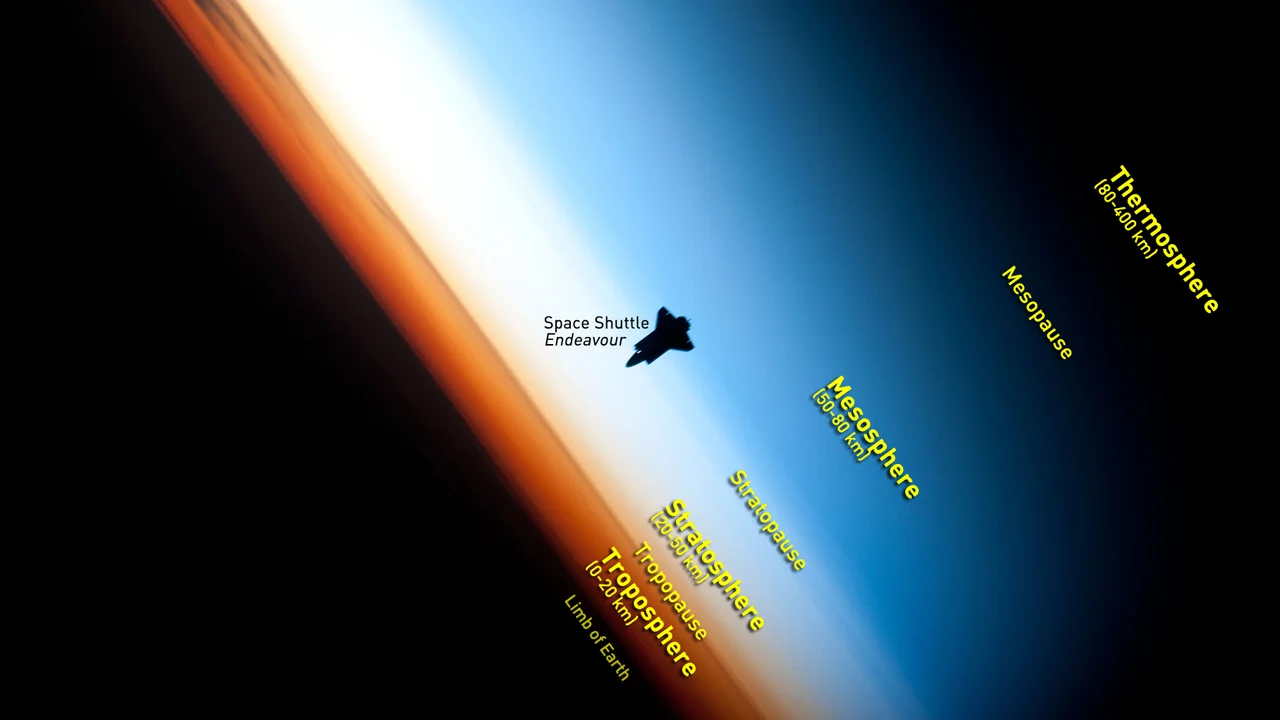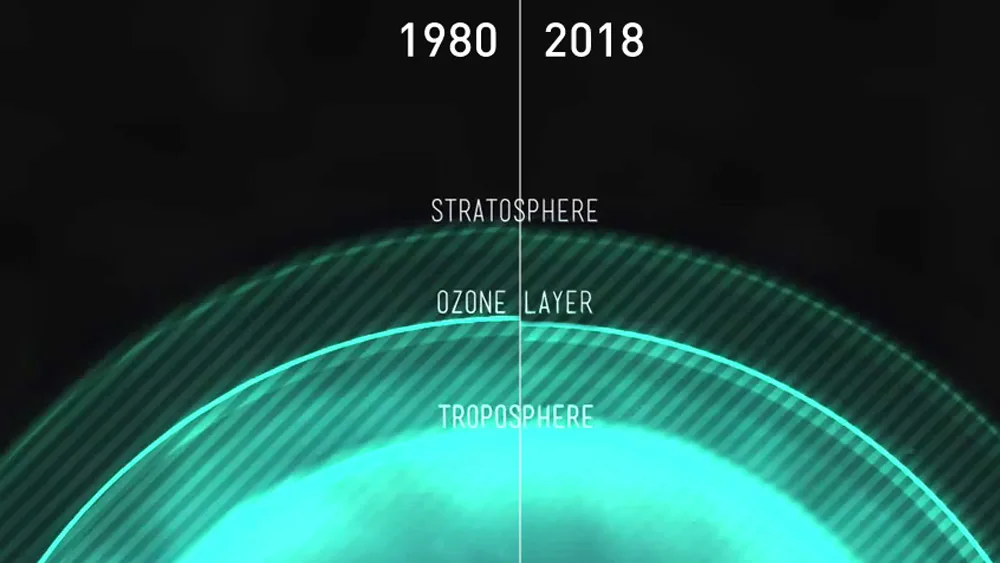
Earth's stratosphere is shrinking due to carbon emissions
"It is shocking. This proves we are messing with the atmosphere up to 60 kilometres," says researcher.
Researchers have found that greenhouse gas emissions are altering the structure of our atmosphere, causing the stratosphere to shrink by over 400 metres since 1980.
Earth's atmosphere is arranged like a layer cake. At the bottom is the troposphere, where nearly all weather occurs. The top of this layer — the tropopause — is typically found at around 12 kilometres above the ground. Due to temperature differences, though, it is lower (6 km) near the poles and higher (20 km) near the equator. The next layer up is the stratosphere, where we find the protective ozone layer that shields us from harmful ultraviolet rays from the Sun. The mesosphere is next, followed by the thermosphere, and finally, the exosphere, where Earth’s atmosphere becomes nearly indistinguishable from outer space.

This picture was snapped by an astronaut on board the International Space Station on February 9, 2010. It shows the Space Shuttle Endeavour against the backdrop of the first four layers of the atmosphere, which have been labelled for clarity. Although the image angle makes it appear as though Endeavour is just above the stratosphere, it is actually in the thermosphere, at an altitude of around 320 km. Credit: NASA/Scott Sutherland
The thicknesses of these atmospheric layers can undergo small temporary changes due to day-to-day weather, solar activity, and space weather. However, over the past several decades, scientists have noticed more long-term trends due to global warming.
As greenhouse gases have accumulated in the atmosphere, they have trapped more outgoing radiation in the troposphere and re-radiated it back towards the ground. This has slowed the escape of heat from the troposphere, causing it to warm and expand. Since the late 1970s, it has already resulted in the height of the tropopause rising by hundreds of metres.
Meanwhile, the stratosphere has been on an opposite trajectory — it has cooled and contracted. In the past, ozone depletion played a significant role in stratospheric cooling. Lately, though, as ozone depletion has slowed (and appears to be on a reverse trend), greenhouse gases have become the dominant reason. Partly this is due to less heat reaching the stratosphere from below. Increased carbon dioxide levels in the stratosphere also radiate more heat away from the ozone layer into space.

As greenhouse gases have accumulated in the atmosphere, this has warmed and expanded the troposphere, while cooling and shrinking the stratosphere. Credit: WMO/Scott Sutherland
A new study published in the journal Environmental Research Letters examined these stratospheric changes to find not only their extent but what impacts this could have in the future.
The researchers discovered that, between 1980 and 2018, the stratosphere contracted by around 400 metres. Furthermore, simulations based on their research show that, if emissions continue, the stratosphere could shrink by another 900 metres between now and the year 2080.
"It is shocking," study co-author Juan Antonio Anel of the University of Vigo in Spain, told The Guardian. "This proves we are messing with the atmosphere up to 60 kilometres."
The full ramifications of a shrinking stratosphere aren't yet known. However, the researchers note that it could impact how the stratosphere behaves and thus affect the accuracy of climate models. It could also cause changes in Earth's ionosphere that would affect long-range radio communication and the performance of GPS navigation. Lastly, it could even have an impact on orbiting satellites and space junk.
IMPLICATIONS IN SPACE
Satellites and space stations circling Earth must constantly contend with the impacts of the upper atmosphere and the drag it introduces in their orbits. This is a small but constant effect, which only increases in times of high solar activity due to the thermosphere expanding out into space. This drag slows them down, causing their orbits to decay over time. As a result, these spacecraft must periodically expend fuel to maintain their orbit. Given how difficult it is to refuel an orbiting satellite, this reduces their overall time in space.
A thinner stratosphere, and thus a lower mesosphere and thermosphere, actually helps with this issue. A satellite that experiences less drag conserves more fuel, can stay in orbit longer, and increase its operational lifespan. These conditions can actually help with space launches, as well, as they are likely to require less fuel to reach their destination.
Watch below: This animation shows the buildup of space junk orbiting Earth since the 1950s
There's a significant downside to this, though. Pieces of space junk, whether they are nuts and bolts or entire rockets, experience the same drag from the atmosphere as they orbit the planet. And, as with satellites, a thinner stratosphere will mean less drag on them, so they, too, will stay in orbit longer. Longer satellite lifetime and less fuel expended by rockets are good things, but having more space junk circling the planet is universally bad. It increases the likelihood of junk colliding with functioning satellites and the chances of a catastrophic accident at a time when human flights to space are expected to become more common.

